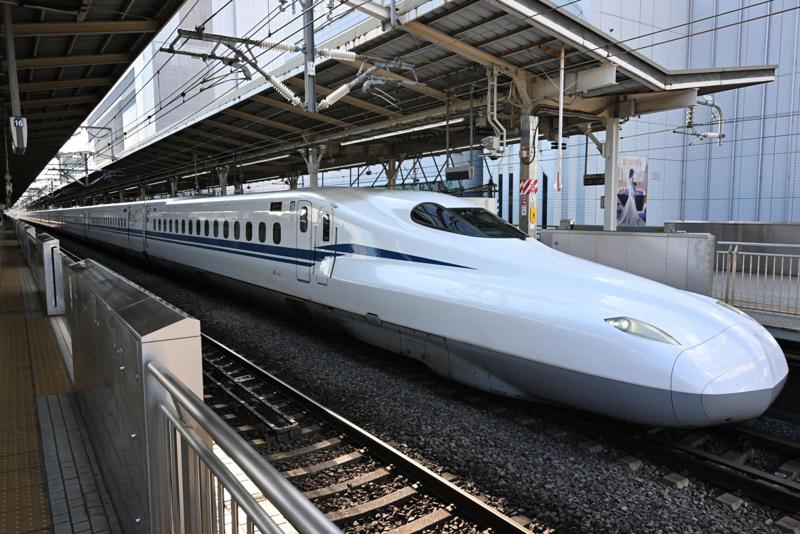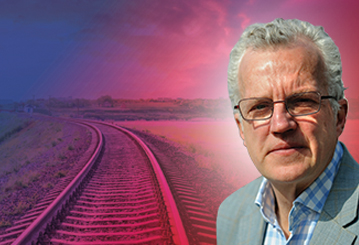The control centre of the Shinkansen, the world’s first high-speed railway, is surprisingly low-tech.
On the wall, the display of the line is distinctly 20th century rather than 21st, with no colour and little detail. Even the computer screens look as if they are just one generation ahead of Amstrad.
The control centre of the Shinkansen, the world’s first high-speed railway, is surprisingly low-tech.
On the wall, the display of the line is distinctly 20th century rather than 21st, with no colour and little detail. Even the computer screens look as if they are just one generation ahead of Amstrad.
The controllers, all male with one exception, are standing about and poring over screens as in any other control centre. But there are surprisingly a lot of them, and one is busily photocopying vast amounts of documents - something of a rarity in the UK nowadays, given the emphasis on paperless.
But the way that the trains are being run from this small, crowded, windowless office does illustrate a fundamental aspect of the Shinkansen.
It does not boast about being the fastest, or the best, or the most pioneering. The emphasis is on efficiency, effectiveness, and economy.
The efficiency is legendary. Delays are counted in seconds, and the average over the year is just 1.6 minutes per train. That figure has (apparently) gone up by 0.1 minutes per train since COVID, because the rainstorms have got heavier as a result of climate change. There has also been the occasional (relatively minor) earthquake, which as an understandable precaution halts all the trains.
I watched the despatch of a train. The guard, a young man wearing white gloves and a uniform so spick and span one would think that a local dignitary was arriving to inspect the crew, got out and looked at his watch every few seconds before, at last, talking to the driver 16 carriages away at the front and giving the go-ahead to depart.
He got back in the train, but remained with his head out of the window to ensure that nothing untoward was happening on the platform. It never is.
With their huge platypus-like elongated fronts and the little oval-shaped windows in the carriages, the trains themselves do not appear as the height of modernity. Indeed, quite the opposite - there is something a bit retro about them.
And inside there is the same feel, rather like aeroplanes used to be with cloth-covered seats and enough leg room for a six-footer like me. The oval-shaped windows would also not be out of place on an aircraft.
However, the service is very different from when the trains were first introduced 60 years ago. At the time there were dining cars, and bento boxes were sold on board for those not using the restaurant.
Today, sadly, no bento boxes (the meal in a box with chopsticks and a large selection of tasty morsels with enough rice to ensure a full stomach) are available on the trains.
That’s an example of the emphasis on economy. There is no catering aboard, apart from in the ‘Green’ premium carriages where at-seat service is still available.
Until last year, the famous bento boxes were dispensed from trolleys by friendly waitresses on the trains. But they now have to be bought at the station kiosks.

I was told by a senior rail manager that one reason for the withdrawal was that they could not find the staff for catering onboard, as it was not a popular job. But I was not entirely convinced by that explanation. It seems that cost saving was really at the root, part of a worldwide trend of cutting onboard catering on trains.
The journey itself was relentless. Of course it is smooth, as the tracks are a billiard table and largely straight. But it’s not exactly relaxing - the scenery goes past too quickly.
It’s a TikTok experience. Tik, there’s a field, but there’s no time to find out what’s growing. Tok, there’s a small town but the station whizzes by too fast to see its name.
There are in fact 15 intermediate stations, all on extra tracks which means that the fastest train (the Nozomi) can hurtle by without being slowed down by other services.
After the two Tokyo stations, the Nozomi only stops at Yokohama, Nagoya and Kyoto before reaching Osaka. Then there is the Hikari (which stops at other hub stations) and the Kodama (which stops at all the intermediate stations).
There were very few intermediate stops when the line first opened. But its very existence has led to intense urban development alongside, which in turn forced the railway to serve this growing population.
Indeed, most of the 300-mile journey between Tokyo and Osaka has become almost one continuous urban landscape, and often sound barriers have been installed to mitigate the noise of the trains.
That’s been a big issue in Japan, and it has slowed down the building of further lines once the first had been completed in 1964, because of resistance from locals.
But in the 60 years since the first line opened, the network has been built up to just under 3,000km (1,864 miles). It is broadly complete, although a few extensions are being envisaged - but mostly not until the 2030s or even 2040s.
There is also the expensive maglev project to provide an additional line between Tokyo and Nagoya and eventually Osaka, although the scheme has been beset by major difficulties - not least the objection of a local mayor on the route, which held it up for five years.
No opening date has yet been given, but the project team still says it will run at 505mph, giving a journey time of just 40 minutes for the 286km (178-mile) run to Nagoya.
The journey will not be much fun, though, as 90% of it will be in tunnel. Nothing will persuade me that this is a viable technology, given the ballooning costs and the likely unpleasantness of the journey.
Essentially, while the Tokyo-Osaka Shinkansen line is highly profitable and has grabbed virtually all the passenger traffic from the airlines, other routes with longer distances are either uneconomic or barely wash their face.
The economics of Japanese Railways, which was privatised into one freight and six passenger companies in the 1980s, were boosted at the time of the sale by the scrapping of most of the massive debt (37 trillion yen, which at the exchange rate at the time was around a staggering £300 billion).
Interestingly, there is no dynamic pricing on the route. The cost of the journey between Tokyo and Osaka is around £70 (a non-reserved ticket is a few pounds cheaper), whatever time of the day you travel.
This is determined by state regulation which sets the maximum fare, and the Japanese railway managers I spoke with are a bit frustrated that they cannot vary the price more to address peak demands. But in truth, the trains seem to be busy pretty much all day long - I travelled on a 1500 service back to Tokyo and it was 80% full.
To end on a final statistic: just before COVID, there were 373 trains daily running on the Tokyo-Osaka route, and although that has been reduced by about 10% at the moment, ridership is increasing and is expected to reach the peak of 477,000 daily travellers.
At peak times, there are 17 trains per hour, which is just one fewer than HS2 was originally designed for, but which was met by scepticism in some railway circles. Certainly, to achieve that, we would need Japanese-level railway discipline - something that doesn’t seem achievable in a British context.
Login to continue reading
Or register with RAIL to keep up-to-date with the latest news, insight and opinion.



















Login to comment
Comments
No comments have been made yet.